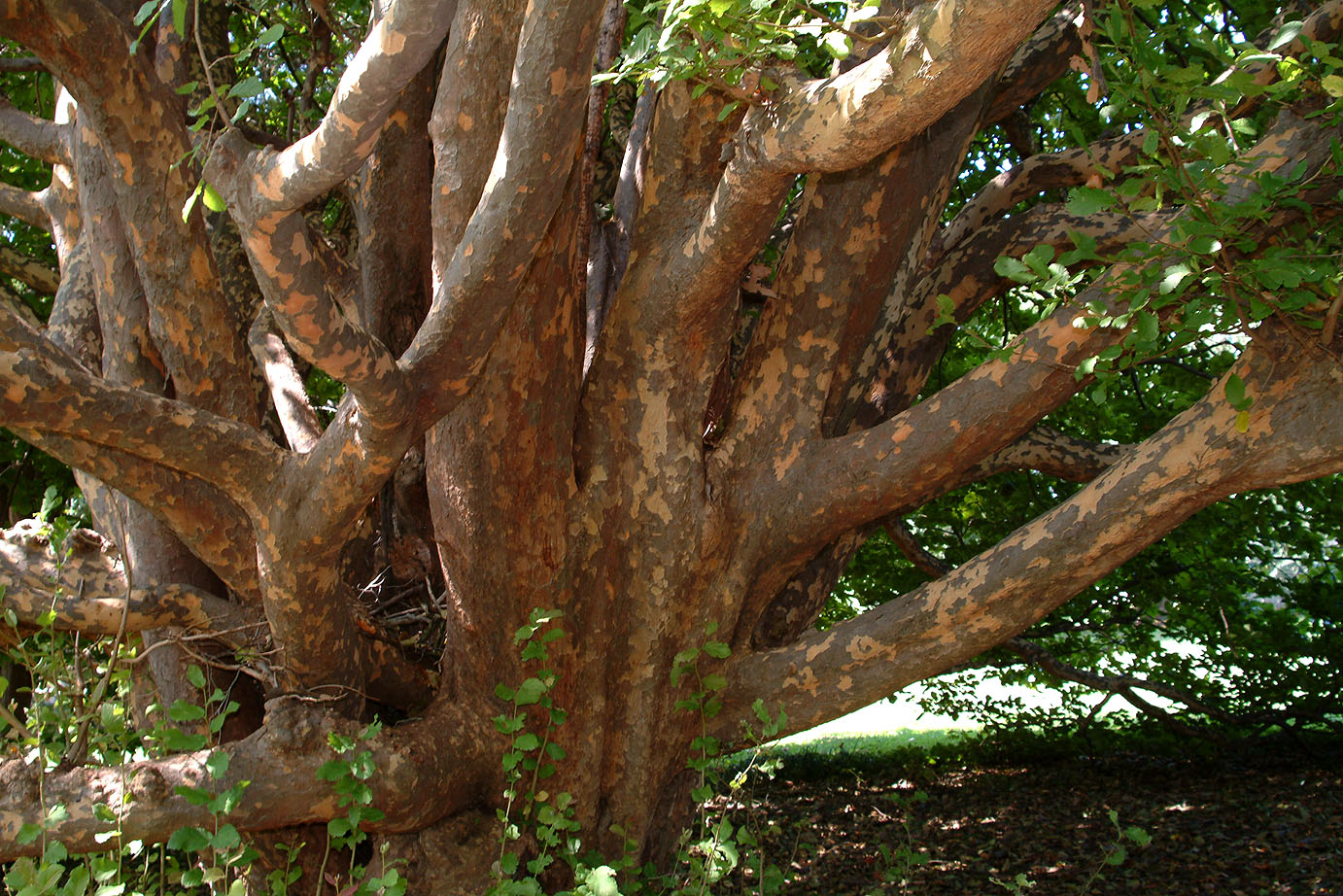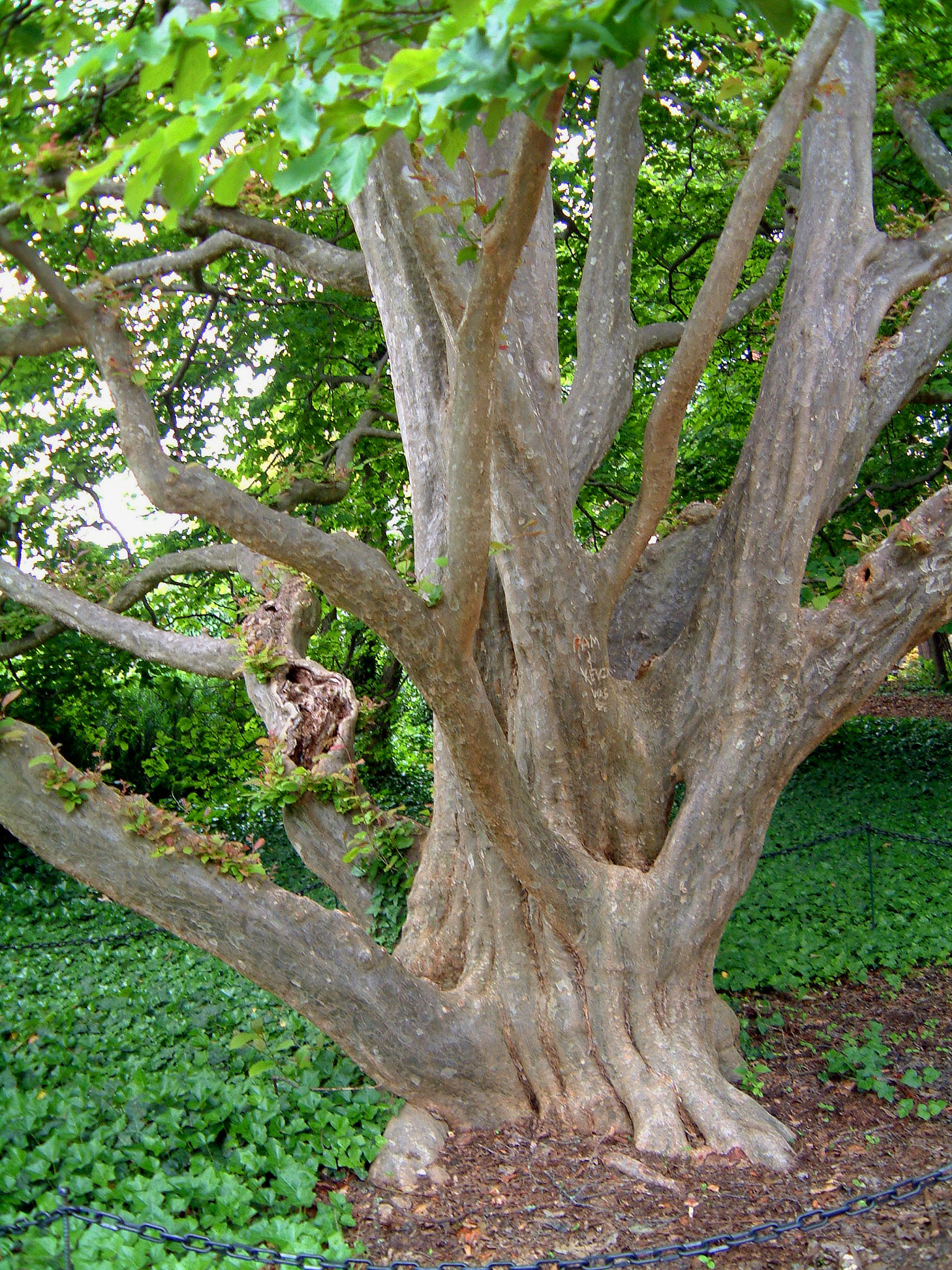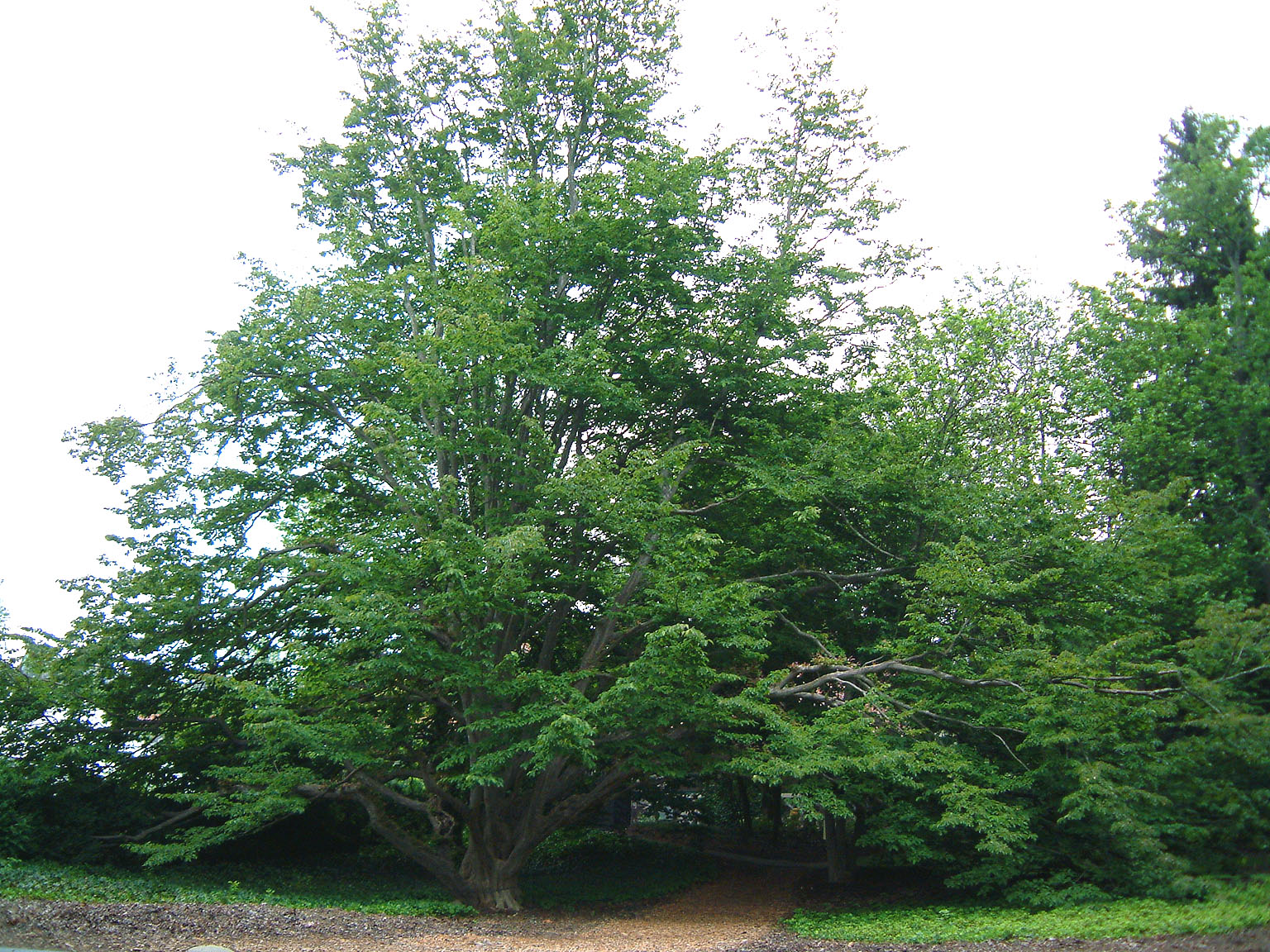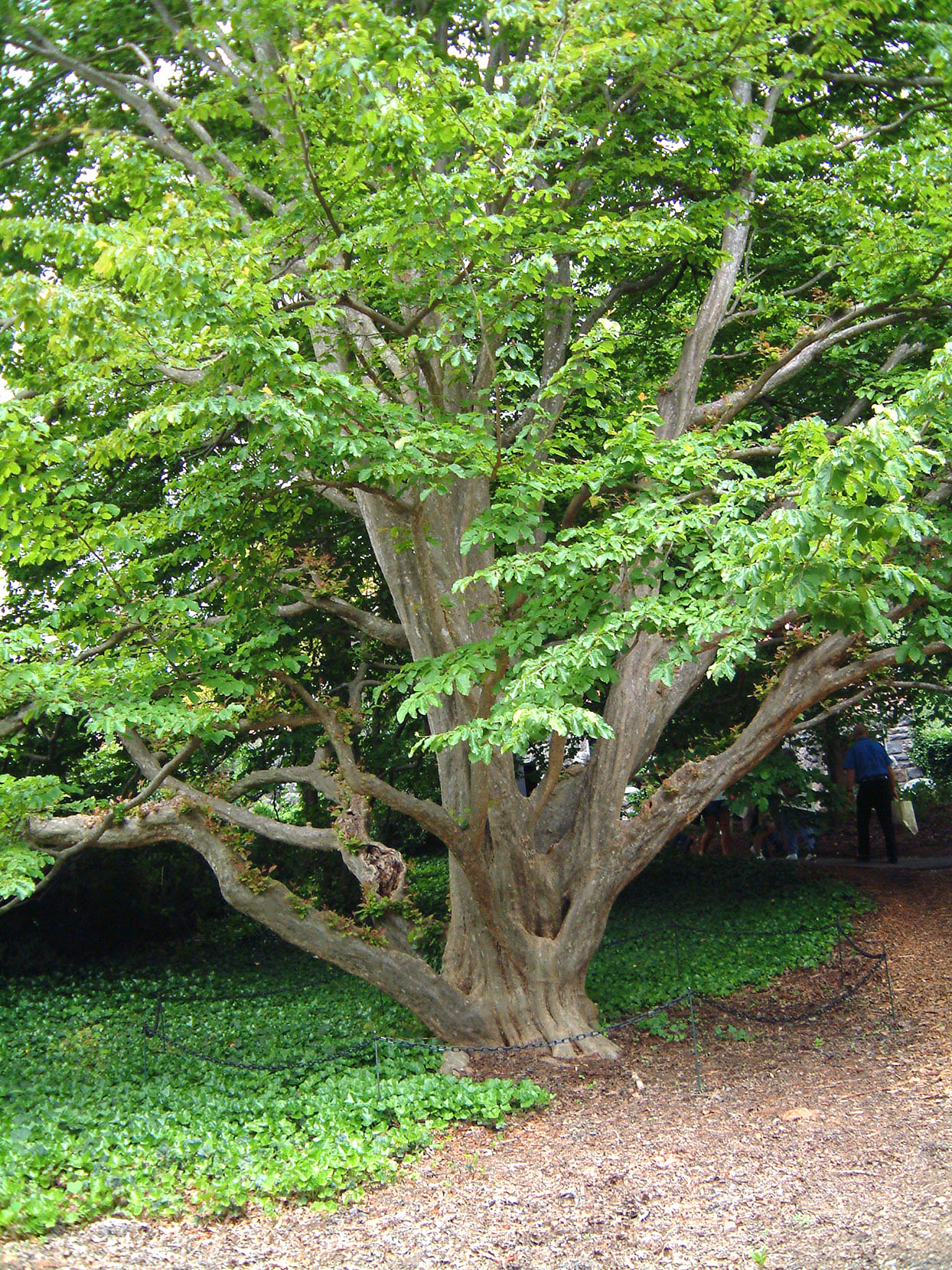|
NOS PARROTIA PAGE |
|
|
Copyright
2001-2003. New Ornamentals Society. All Rights Reserved. Lawful for online access only by current society members. All downloading, printing, saving to media, imaging, screen capture, or offline use is prohibited. Duplication by any means, method, or technology is unlawful. Do not link to this page. |
Until September 2003 I thought the best Parrotia in the US was either at the Biltmore Estate or the Arnold Arboretum. This old, majestic, and utterly shocking tree at the Maymont Foundation Gardens in Richmond, Virginia is like comparing a Parrot to a sparrow for aesthetic beauty. I'll confess to saying "Holy #@$%' when first walking into it's medusa-like, semi-fused and clustered base. Out came the 12.1 megapixel, shooting it a dozen ways with and without flash in all combinations of shutter and aperture. As with most Parrotia persica, most people walk by the wide-spreading and thick canopy of ordinary leaves, never discovering the beauty within. This is part of the species' illusive and hidden charm. It rewards the casual, thorough, and informed visitor to the garden and gives nothing to the distracted, bored, and hurried guest. One needs to have an educated eye or desire to walk up to every single old tree to truly know a garden. Trees like this reward one's slow, steady way of learning from a grand arboretum. This Maymont masterpiece is so far above the other examples with it's bold and sharply contrasting sectors, I'm recommending it be propagated and cloned as a species replacement cultivar. It appears to be older than the original Biltmore tree, the source of much modern stock in US gardens. However, as the small limbs are richly exfoliating and patterned, one may assume young trees of this clone would present themselves with early appeal. Compare to the photos of the 'Biltmore' clone in it's original tree below. Click both images to enlarge. LCH. |



